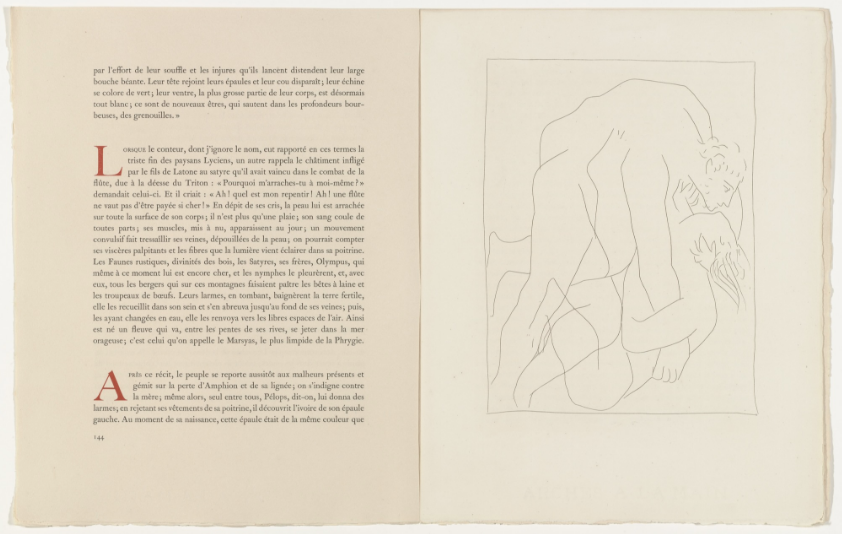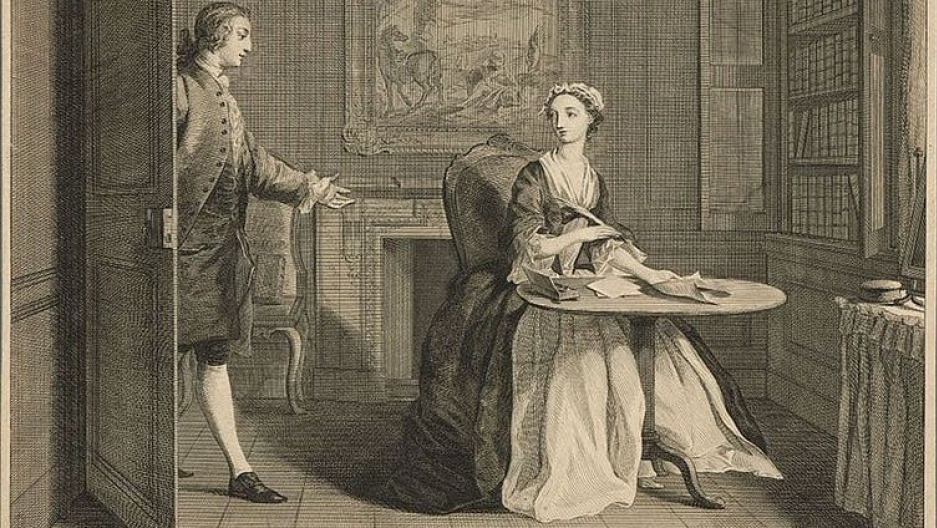The Issue
This year has brought a reawakening and amplification of social awareness on gender-related issues in the public sphere. Inspired by the voices of the #MeToo and #TimesUp movements, the May-June issue of the Forum takes up the question of how scholars whose research informs discourses about religion can uniquely contribute to extending an awareness of these issues through their scholarship and teaching. Using the resources available in the academic study of religion, contributors to this issue reflect outwards considering how their scholarly work is informed and transformed by movements like #MeToo, along with the various ways in which they hope this work can contribute to the wider conversation on gender, consent, and power dynamics.
The Forum was thrilled to collaborate with the Divinity School Women’s Caucus in putting this issue together. Allison Kanner (PhD student at the Divinity School and coordinator of the Women’s Caucus) and Anna Lee White (MA student at the Divinity School and Women’s Caucus representative) served as guest editors for this month’s issue. Throughout the month, scholars contributed diverse essays on the theme of gender and religion in the wake of #MeToo and #TimesUp. Professor Sarah Hammerschlag closed out the roundtable with a response. We invite you to join the conversation by submitting your questions and comments.
Published Essays:
- Rachel Schine (University of Chicago), Textual Harassment: Reading Medieval Arabic Love Verse in the Context of Consent
- Elizabeth Brocious (University of Chicago), #MeToo and Discourses of Love: A Mormon Case Study
- Samuel Catlin (University of Chicago), The Will to Ignorance: #MeToo as Pedagogical Crisis
- Response by Sarah Hammerschlag (University of Chicago), #TimesUp and the Myth of Neutral Space
Abstract
In “The Will to Ignorance: #MeToo as Pedagogical Crisis” Samuel Catlin (University of Chicago) asks to what extent the cultural habits and institutional biases that sustain rape culture, as identified by the #MeToo campaign, are imparted or reproduced in the university classroom. Taking a request for trigger warnings on course content at Columbia University, feminist author Rebecca Solnit’s critique of the separation between art and life, and Samuel Richardson’s influential 1740 novel Pamela: or, Virtue Rewarded as examples, he argues that the encouragement of critical thinking—vital to the pedagogy of the humanities at today’s universities—can actually risk reifying the oppressive structures such thinking is intended to call into question. He concludes that scholars and teachers in the humanities must engage this problem seriously and that the discipline of religious studies may offer a uniquely generative model for how to do so.
by Samuel Catlin
In 2015, the feminist critic Rebecca Solnit wrote a tongue-in-cheek article mocking an Esquire list of “80 Books Every Man Should Read.”1 In a follow-up essay, “Men Explain Lolita to Me,” she quotes an online comment posted below that article: “To read Lolita and ‘identify’ with one of the characters is to entirely misunderstand Nabokov.”2 This presumes that “understanding Nabokov” is what any reader of Lolita must be after, as well as the reader’s ability to control her responses to the text. The reader is expected to simultaneously avoid relating the text to her own experiences and perspective and to relate the text to everything else she has ever read, since only thus could anyone hope to “understand Nabokov” by, say, catching all the multilingual puns and allusions in Lolita.
These expectations are, of course, incompatible. No reader can claim to be unaffected by reading, since it is precisely reading which constitutes a person’s experience and perspective. “Critical disinterest” is always a fiction; the real question is only whether it’s sustainable, and for whom. “The popular argument that novels are good because they inculcate empathy3 assumes that we identify with characters, and no one gets told they’re wrong for identifying with Gilgamesh or even Elizabeth Bennett,” writes Solnit, but “when you identify with Lolita, you’re clarifying that this is a book about a white man serially raping a child over a period of years. Should you read Lolita and strenuously avoid noticing that this is the plot and these are the characters? Should the narrative have no relationship to your own experience?”4 Later, “a nice liberal man” replied (unsolicited) to Solnit: “I wouldn’t care if a novel was about a bunch of women running around castrating men. If it was great writing, I’d want to read it. Probably more than once.” But of course, as Solnit points out, “there is no such body of literature, and if the nice liberal man who made that statement had been assigned book after book full of castration scenes, maybe even celebrations of castration, it might have made an impact on him. . . . You read enough books in which people like you are disposable, or are dirt, or are silent, absent. . . and it makes an impact on you.”5
Solnit’s essay implies that the negative impact of problematic representation is ubiquitous. In the context of teaching the humanities, this means we may be missing the point if our concerns alight solely on the student who sees something of herself in Dolores Haze, not because that student’s experience is unimportant, but because its correlate is the experience of the student who, precisely, does not identify with Dolores. If we are teaching the first student, we are also teaching the second. It is at this point that the “#MeToo moment” brings into focus a specifically pedagogical crisis. For #MeToo is not really a campaign against sexual violence per se. While we can take for granted the opposition of the participants to sexual violence tout court, these campaigns are not about the sheer frequency of abuse, assault, harassment, and discrimination so much as the cultural habits and institutional biases which allow these things, despite their frequency, to be concealed, ignored, denied, even covertly encouraged—hence the “too.”6 The campaign makes the point that these stories had to be foisted en masse into public consciousness in order to be recognized at all.7 #MeToo thus addresses the strength of the patriarchal will to ignorance and normalization concerning the intersection of sex, gender, and power in American life. The campaign shares a goal, then, with the Columbia University students who in 2015 petitioned for the addition of “content warnings” to the syllabus of their required humanities core course, because of the rape passages in Ovid’s Metamorphoses.8 This is a call for the simple acknowledgement that there are students for whom reading is not merely a matter of “understanding Ovid.” In other words, #MeToo. Point being, the will to ignorance is learned in (among other places) the classroom.

A print by Pablo Picasso for an edition of Ovid’s Metamorphoses, depicting the rape of Philomela by her brother-in-law, Tereus. Credit: Museum of Modern Art.
For instance, Samuel Richardson’s novel Pamela (1740) stands among the most-taught texts in undergraduate English courses. Its plot is an extended episode of workplace harassment: Pamela, a 15-year-old maid, is groped, threatened, propositioned, assault, kidnapped, and eventually seduced by her wealthy employer, the much older “Mr. B.” Pamela cannot quit, because her parents depend on her income to live, so she is effectively held hostage by her working-class status. The first half of the novel comprises a series of increasingly desperate letters from Pamela to her parents. These letters, for various elaborate reasons, never get mailed, so we only get Pamela’s side of the story—a version in which she repeatedly insists that her virtue is intact: “I will die a thousand Deaths, rather than be dishonest any way,” she writes early on.9
Ironically, the limitations on narratorial perspective have led readers from the eighteenth century onward to persistently doubt Pamela’s honesty. The novel’s earliest readers were divided on the question of whether Pamela is telling the truth or lying to cover up her own shameful desires.10 Ultimately, insofar as both the charitable and suspicious readers share a “drive to know the truth about Pamela,” as Christine Roulston writes, all of them are complicit in a general suspicion.11 Feminists perpetuate it when they try to legitimize rather than condemn Pamela’s sexual agency, and even the championing of Pamela as one of the first truly modern novels bases this value on Richardson’s acute psychological realism—that is, his representation of a disjunction between interior experience and outward expression.12
By suggesting that Mr. B. is a casualty of Pamela’s selfishness and shame, the critical suspicion of Pamela closely mirrors the logic of rape culture. To be fair, the suspicion is warranted. Pamela’s narrative is filled with far too many coincidences, contradictions, narrow misses, and general improbabilities to be “believable.” Yet this is precisely my point. Pamela’s narrative sets off numerous signals which would alert any remotely critical reader to textual duplicity or concealment—and as far as I can tell, these signals are basically identical to those which stoke doubt concerning reports of sexual harassment and assault. If Mr. B. was really treating Pamela so horribly, why would she marry him? Couldn’t we read much of her behavior as a performance designed to lead him on? These questions eerily recall the way that police, the justice system, and the media pick apart reports of sexual assault.
In other words, critical suspicion isn’t innocent. Sometimes it’s the guise of a will to ignorance, and it can just as easily reinforce the machinations of power as unmask them.13 When we encourage students (in all disciplines, regardless of specific content) to doubt the veracity of narrative testimony, it’s worth asking whether we aren’t also giving them tools to sustain rape culture. Some of those tools are already being put to work in the classroom. With a text like Pamela, for example, fostering suspicion also tends to foster a denigration of non-suspicious interpretations and dismisses reader identification with Pamela. Furthermore, encouraging students to doubt Pamela doubles as unwittingly discouraging students from being open about their own experiences.
This isn’t yet another call for a professional turn “against suspicion.”14 I maintain that suspicion is necessary for fostering and practicing the critical thinking upon which the humanities has staked its claim to utility in this age of neoliberal austerity. I’d also resist the notion that there is some fundamental difference between a fictional text and “real life,” or between what happens in the classroom and what transpires outside. And there’s real danger in the mandate to always believe and never suspect a report of sexual assault.15 Nevertheless, critical thinking is only as meaningful as it is instrumental, and it won’t always be mobilized toward ends of which we approve. Our teaching, like the texts we teach, may cross the permeable border of text and experience in ways we don’t anticipate or notice. Teaching can help build a more equitable world, but not without first reflecting on how even our most cherished pedagogical values have contributed to the troubled one in which we currently live.
Religious studies serves as a key resource for wrestling with these questions. The discipline’s object of study is notoriously difficult to unequivocally define,16 and religion’s history as an object of study is bound up with that of Enlightenment secularism and its entrenched antinomies of faith and reason, difference and hegemony, global south and global north. The study of religion takes seriously claims to experience or knowledge that do not conform to standards of reason and evidence—but it also reflexively considers how its own constitutive categories produce their objects. To me, religious studies poses a challenge: to suspect everything and to ask if suspicion alone is enough, to at once disbelieve and to suspend our disbelief. By engaging its own intractable contradictions and seeking to make them generative for research and teaching, religious studies might offer something like a pedagogical model for the humanities after #MeToo. ♦
 Samuel Catlin is a joint Ph.D. candidate in Comparative Literature at the University Chicago and Ph.D. student in Religion, Literature & Visual Culture at the University of Chicago Divinity School. He works on the history of literary criticism and theory, rabbinic and modern Jewish thought, and biblical and philosophical hermeneutics. His dissertation offers an historical and theoretical account of the surge of interest in rabbinic exegesis among American literary scholars during the heyday of postmodernist literary theory, situating the ensuing debates in a longer intellectual history of the role ideas about Judaism play in the formation, definition, and institutionalization of the modern category “literature.”
Samuel Catlin is a joint Ph.D. candidate in Comparative Literature at the University Chicago and Ph.D. student in Religion, Literature & Visual Culture at the University of Chicago Divinity School. He works on the history of literary criticism and theory, rabbinic and modern Jewish thought, and biblical and philosophical hermeneutics. His dissertation offers an historical and theoretical account of the surge of interest in rabbinic exegesis among American literary scholars during the heyday of postmodernist literary theory, situating the ensuing debates in a longer intellectual history of the role ideas about Judaism play in the formation, definition, and institutionalization of the modern category “literature.”
Guest Editors
 Allison Kanner is a Ph.D. student in Islamic Studies at the University of Chicago Divinity School. Her research focuses on intersections between medieval Islamicate romance literature, mystical literature, and gender and sexuality in Religious Studies. She currently leads the Women’s Caucus, a student-founded club at the Divinity School, as well as a weekly Persian language conversation group.
Allison Kanner is a Ph.D. student in Islamic Studies at the University of Chicago Divinity School. Her research focuses on intersections between medieval Islamicate romance literature, mystical literature, and gender and sexuality in Religious Studies. She currently leads the Women’s Caucus, a student-founded club at the Divinity School, as well as a weekly Persian language conversation group.
 Anna Lee White is an MA student in History of Religion at the University of Chicago Divinity School. Her studies focuses on the history of South Asian religious literature. She plans to pursue research on devotional poetry and hagiographies from early-modern North India during a PhD at McGill University. She is also a member of the Divinity School Women’s Caucus.
Anna Lee White is an MA student in History of Religion at the University of Chicago Divinity School. Her studies focuses on the history of South Asian religious literature. She plans to pursue research on devotional poetry and hagiographies from early-modern North India during a PhD at McGill University. She is also a member of the Divinity School Women’s Caucus.
Feature Image: An illustration from the original edition of Pamela (1740), engraved by L. Truchy and A. Benoist after paintings by J. Highmore. Credit: Houghton Library.
- Rebecca Solnit, “80 Books No Woman Should Read.” LitHub.com, November 18, 2015. Accessed online May 10, 2018. https://lithub.com/80-books-no-woman-should-read/ ↩
- Rebecca Solnit, “Men Explain Lolita to Me.” LitHub.com, December 17, 2015. Accessed online May 10, 2018. https://lithub.com/men-explain-lolita-to-me/ ↩
- For the classic example of this argument, cf. Martha C. Nussbaum, Love’s Knowledge: Essays on Philosophy and Literature (Oxford: Oxford UP, 1990). ↩
- Solnit, “Men Explain Lolita to Me.” ↩
- Ibid. ↩
- Consider also the rhetorical force of the “all” in the 2014 Twitter hashtag campaign, #YesAllWomen. ↩
- The Weinstein scandal is therefore exemplary, insofar as the object of exposure was not merely the pattern of abusive behavior but also the fact that it had for so long been an industry “open secret” in which a whole swath of media figures were more or less complicit. ↩
- Malcolm Harris, “Western Canon, Meet Trigger Warning,” Al Jazeera America, May 21, 2015. Accessed online May 10, 2018. http://america.aljazeera.com/opinions/2015/5/western-canon-meet-trigger-warning.html. For a sharp rebuttal to the American media’s handwringing about “coddled” students, see Sara Ahmed’s essay “Against Students,” FeministKilljoys.com, June 25, 2015. Accessed online May 10, 2018. https://feministkilljoys.com/2015/06/25/against-students/ ↩
- Samuel Richardson, Pamela: or, Virtue Rewarded, ed. Thomas Keymer and Alice Wakely (Oxford: Oxford UP, 2001), p. 15. ↩
- I rely here on the excellent overview of the reception of Pamela provided by Christine Roulston in her Virtue, Gender, and the Authentic Self in Eighteenth-century Fiction: Richardson, Rousseau, and Laclos (Gainesville: Florida UP, 1998), pp. 1-25. ↩
- Roulston, p. 3. For the charity/suspicion opposition, see Paul Ricoeur, Freud and Philosophy: An Essay on Interpretation, trans. Denis Savage (New Haven: Yale UP, 1970), pp. 1-58. ↩
- As Roulston points out (pp. 2-18), this particular line of feminist criticism also tends to comply with a governing metaphor of concealment and revelation that interacts problematically with the language of clothing, stripping, and nudity which dominates Pamela and its 18th-century reception. While modern critics do not indulge in the blatant misogyny of Mr. B (as Pamela portrays him),they do more or less reiterate his point: “…O, the little Hypocrite, said he! she has all the Arts of her Sex; they are born with her; and I told you a-while ago, you did not know her. …I find I am likely to suffer in my Reputation by the Perverseness and Folly of this Girl. She has told you all, and perhaps more than all; nay, I make no doubt of it; and she has written Letters; for I find she is a mighty Letter-writer! to her Father and Mother, and others, as far as I know; in which she makes herself an Angel of Light, and me, her kind Master and Benefactor, a Devil incarnate!” (Richardson, p. 36). ↩
- For a longer exploration of this complicity of suspicion with the modern police state, see D. A. Miller, “Discipline in Different Voices: Bureaucracy, Police, Family, and Bleak House,” in his The Novel and the Police (Berkeley: U. California Press, 1988), pp. 58-106. ↩
- E.g., Rita Felski, The Limits of Critique (Chicago: U. Chicago Press, 2015). ↩
- Recall the debacle surrounding Rolling Stone’s 2015 feature “A Rape on Campus,” a devastating setback in the public conversation about sexual violence at universities. For a discussion of these ramifications for the critique of rape culture, see Jennifer Doyle, Campus Sex, Campus Security (New York: Semiotexte, 2015), pp. 19-22. The article is no longer available online, but Rolling Stone has published the Columbia University Graduate School of Journalism’s report on the editorial and investigative failures in the article: https://www.rollingstone.com/culture/features/a-rape-on-campus-what-went-wrong-20150405 ↩
- See, e.g., Jonathan Z. Smith’s classic article, “Religion, Religions, Religious,” in Mark C. Taylor, ed., Critical Terms for Religious Studies (Chicago: U. Chicago Press, 1998), pp. 269-84. ↩

